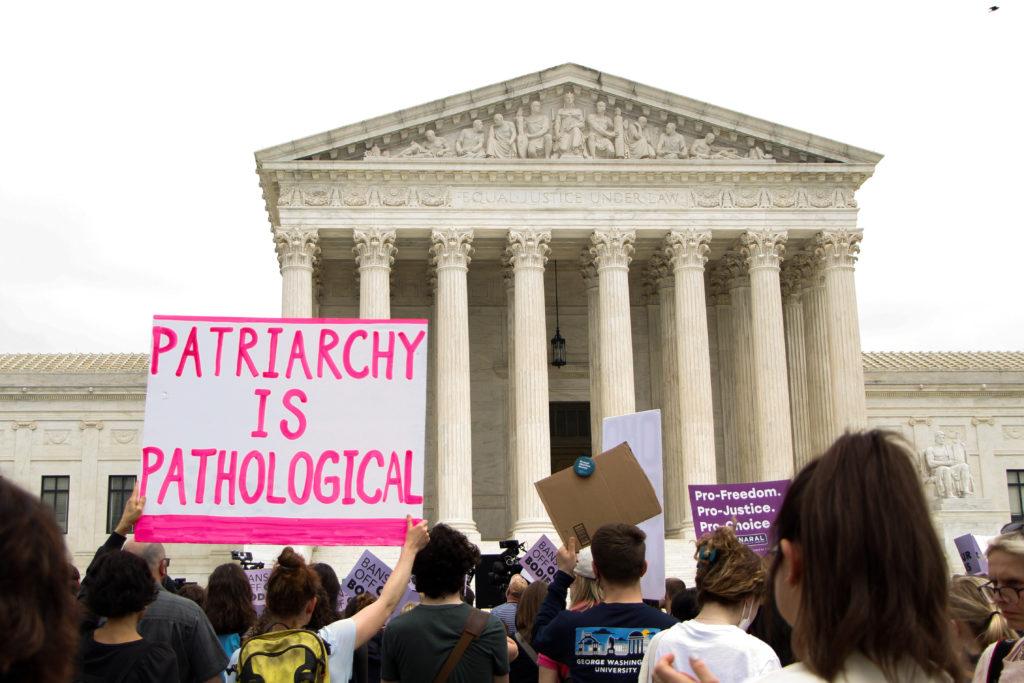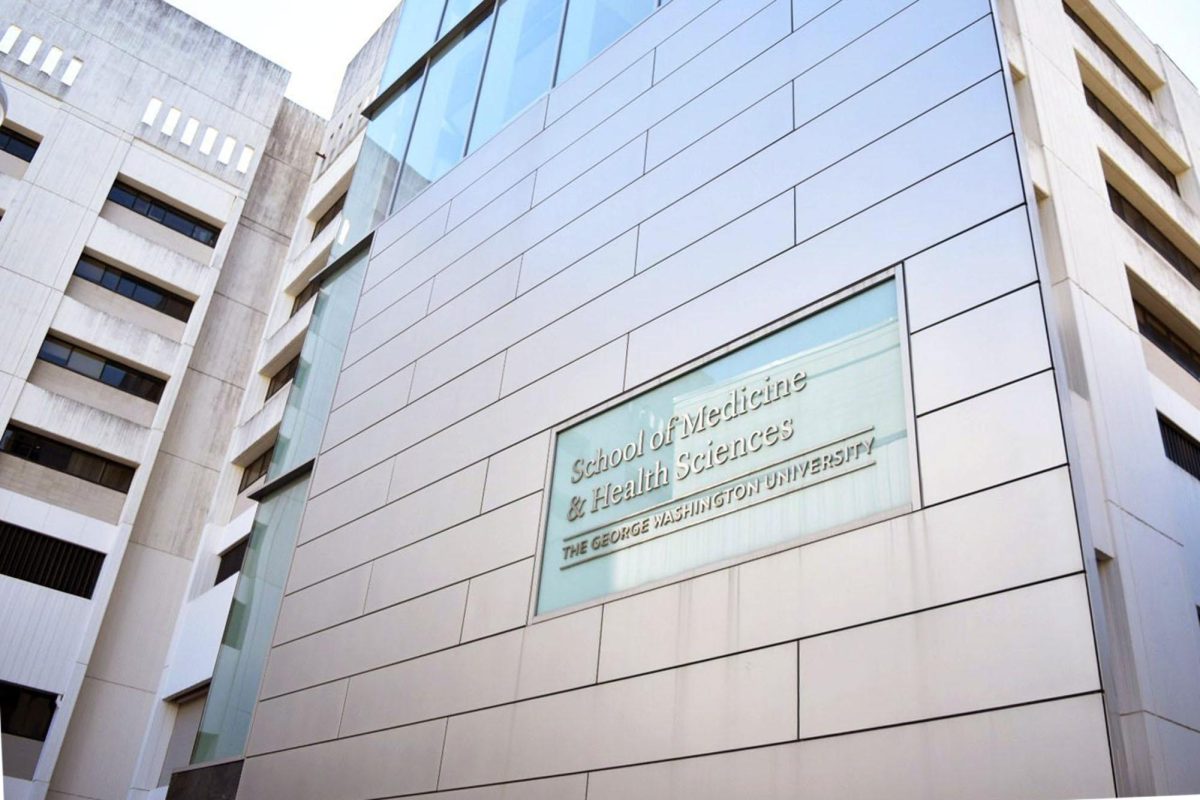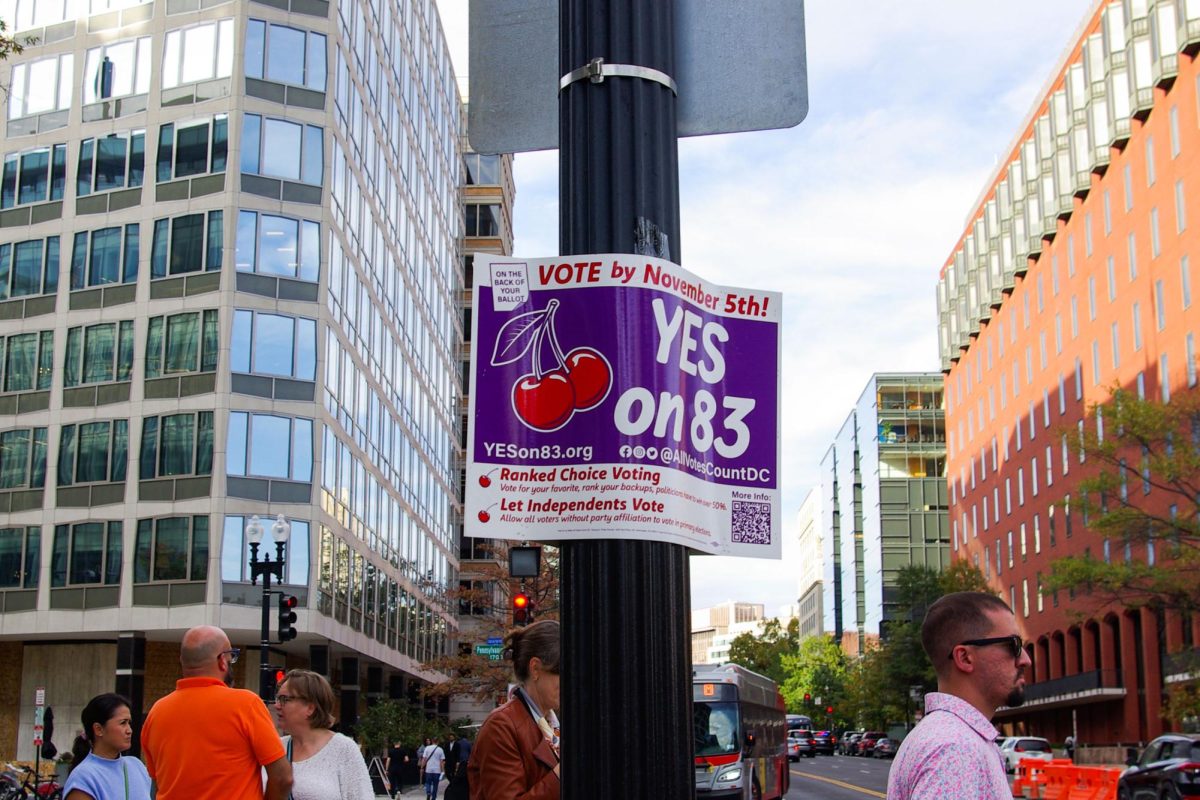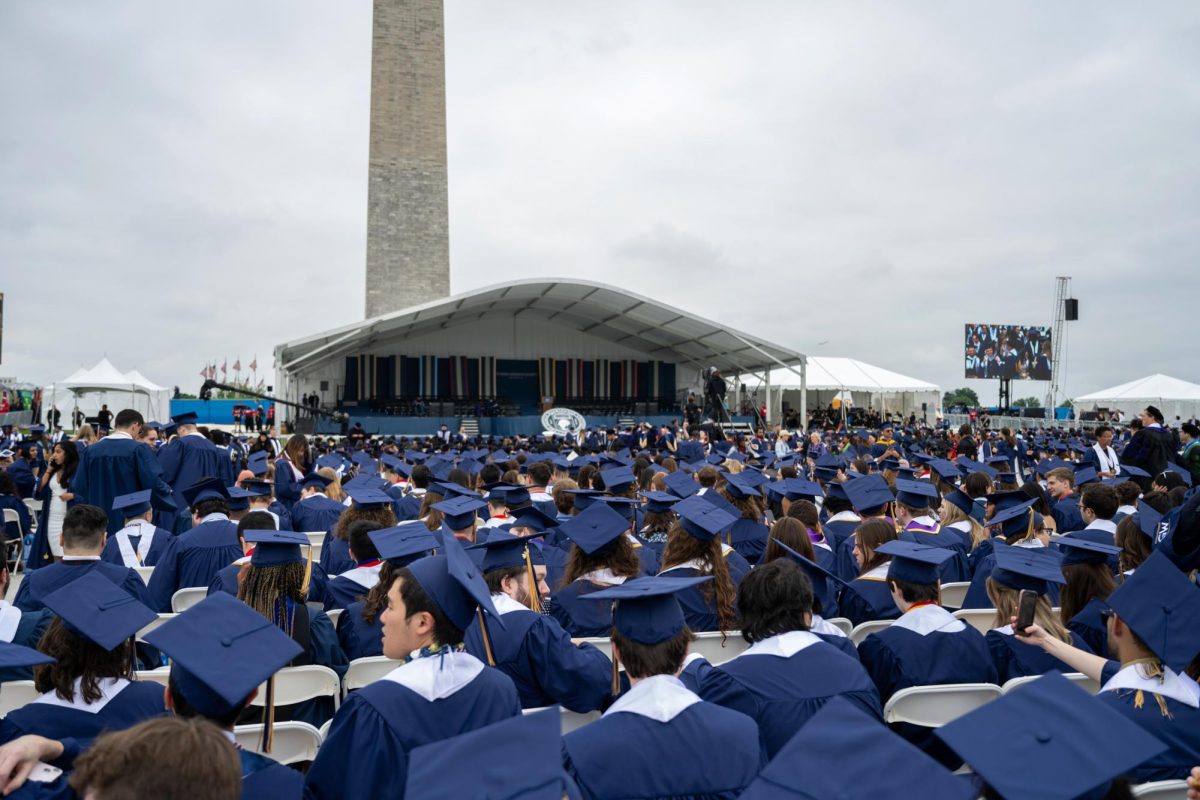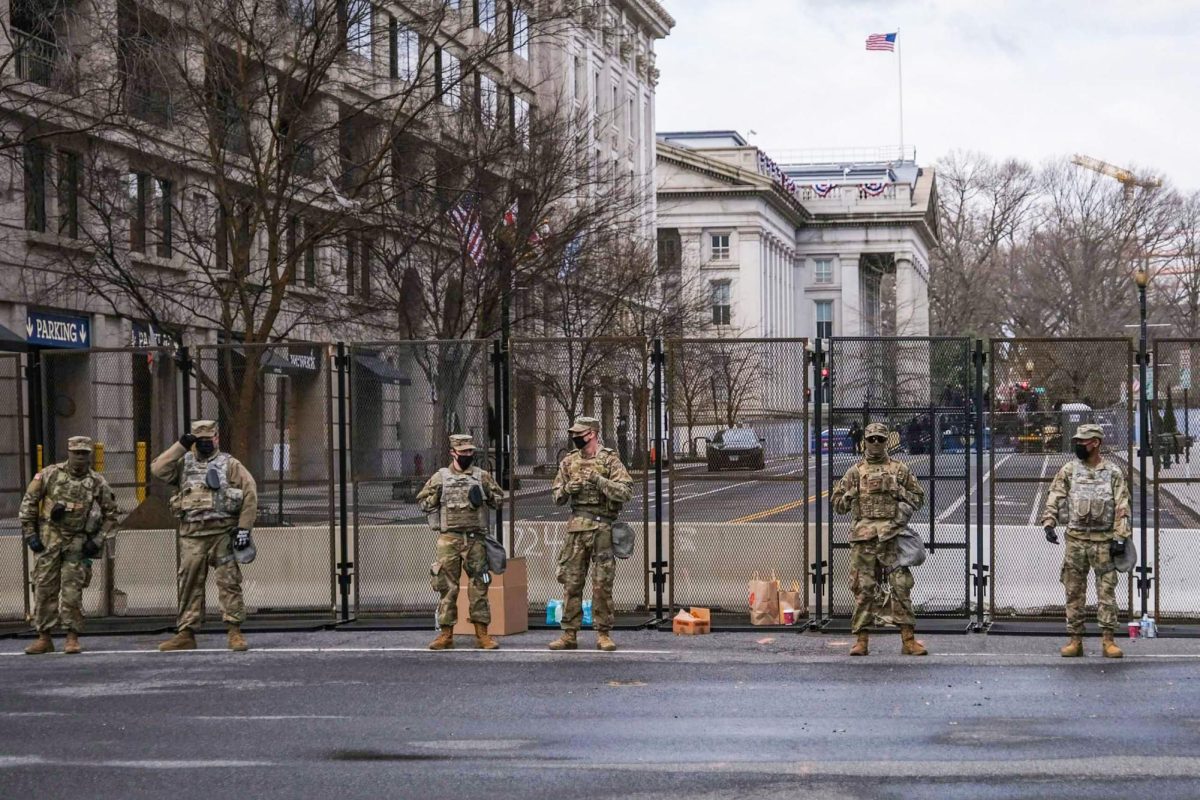Hundreds of protesters have demonstrated outside of the Supreme Court building from Monday night and into Tuesday afternoon after POLITICO leaked a draft majority opinion striking down Roe v. Wade.
The draft majority opinion, which Associate Justice Samuel Alito wrote and the Supreme Court confirmed to be authentic Tuesday, states the Roe v. Wade decision that ruled abortion is a constitutionally protected right was “egregiously wrong,” leading the court to return the issue to the state level. Protesters outside the Supreme Court said the decision was an attack on the rights of people seeking abortions, and action must be taken to protect them.
“It’s time to heed the Constitution and return the issue of abortion to the people’s elected representatives,” Alito wrote in the majority opinion draft.
If enacted, the obtained draft would overturn a 49-year precedent dating back to the 1973 Roe v. Wade case in which the court decided the Fourteenth Amendment Due Process Clause extends the right to privacy to include the right to an abortion. A POLITICO source familiar with the Court’s proceedings said justices Clarence Thomas, Neil Gorsuch, Brett Kavanaugh and Amy Coney Barrett voted with Alito on the opinion in December, but judges can be fluid with their vote until the decision is likely published within the next two months.
At least 500 people gathered outside the courthouse Monday night, including a mix of pro-choice activists calling for abortion protections and anti-abortion counterprotesters defending the leaked decision. The demonstrations at the Supreme Court have continued Tuesday, drawing a crowd of about 200 to 300 throughout the afternoon.
Monday night’s protest started at about 9:30 p.m., with about 50 pro-choice protesters arriving with candles and signs about an hour after the POLITICO leak. The crowd of pro-choice protesters continued to grow with hundreds of people turning out throughout the night.
At 10:45 p.m., about 10 anti-abortion protesters arrived at the court, banging drums and chanting “Roe v. Wade has got to go.”
Police presence outside the building remained minimal, with about 10 Supreme Court police officers standing on the steps behind the barrier and in front of the building, and at least four Metropolitan Police Department cars and motorcycles parked near the intersections on either side of the court on First Street. About 30 Capitol Police officers formed a line next to the protest adjacent to East Capitol Street.
About two hours after the protest began, a group of protesters holding a large banner that read “the people are supreme” stood in front of the barrier that separated the Supreme Court building and the sidewalk where the protests took place. Organizers then encouraged protesters to join the group and link hands in front of the court, who then chanted “Hey hey! Ho ho! Abortion bans have got to go!” and “They say no choice, we say pro-choice!”
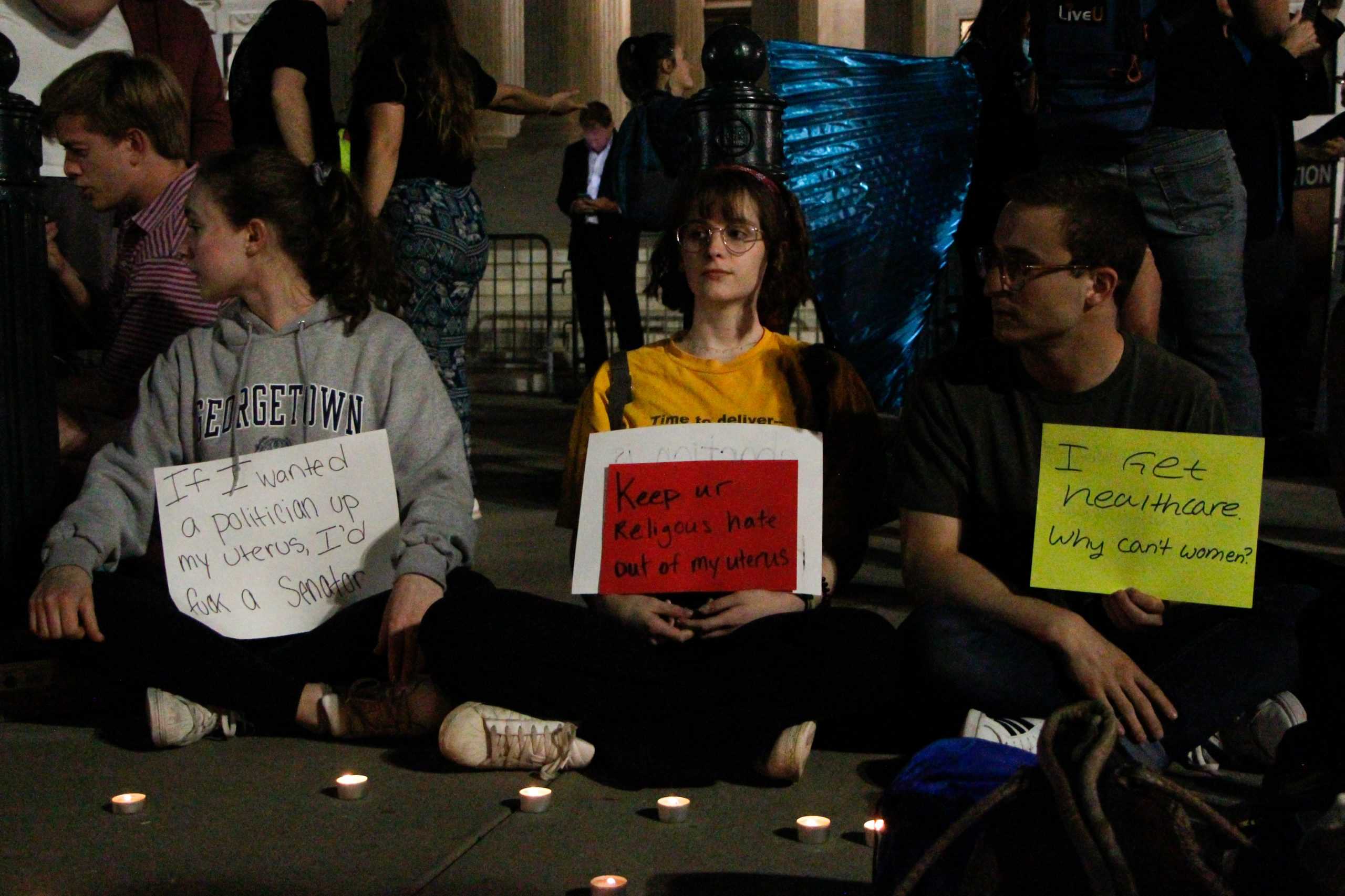
Auden Yurman | Senior Photo Editor
Sanchi Rohira, a sophomore at Georgetown University, said she was in the middle of writing a paper for her women and gender studies class when she got a notification saying the Supreme Court was set to strike down Roe v. Wade. Rohira said she attended the protest because the issue of abortion rights was “personal” to her, and said she felt her voice was “disproportionately powerful” in a city like D.C.
“We’re here not just for ourselves, but for the hundreds of thousands of people across the country who cannot be here, but people who are predominantly Black and brown working class immigrants, for whom Roe is not just about whether or not you can get an abortion if you have the money for it,” Rohira said.
Rohira said after anti-abortion counterprotesters began “tormenting” her friends as they protested the court’s draft opinion in silence, she and another protestor joined hands to form a wall around her friends to protect them. Rohira said several others began to join the wall, which she said became a way to further protect any pro-choice protesters who wanted to grieve after the leak of the draft opinion.
“Our idea here is to be more somber and recognize the depth and the intensity of what is going on here and to just form a chain of solidarity,” Rohira said.
I just spoke to a Georgetown student who said she helped organize this row of college students sitting silently with signs and candles to block the counterprotesters. I’m also seeing people arrive with boxes of pizza, offering food to chanting protestors. pic.twitter.com/rJRLtX7xsu
— Isha Trivedi (@ishaa_trivedi) May 3, 2022
At about 12:30 a.m., D.C. Council member Janeese Lewis George of Ward 4 joined the protest and said the Supreme Court’s draft decision was a “travesty” and an infringement on human rights. She told the crowd to “get ready” to organize and said activists have won the right to choose to have an abortion before, and will do so again.
“Don’t be sad, don’t despair,” George said. “We have fought, we have organized and we have won.”
George said the issue of abortion rights was also an issue of workers’ rights, and said Democrats in Congress should remove the filibuster – one of the major procedural hurdles for the Democratic majority of the Senate – and codify Roe v. Wade, which would mean passing a law affirming people’s rights to choose to have an abortion. George then told the protesters to “dismantle systems” of oppression and led chants of “We’re not going backwards.”
D.C. Council Member Janeese Lewis George has joined the protest, calling for the democratic-controlled congress to end the filibuster to massive applause. George called the court’s preliminary decision a “travesty”. pic.twitter.com/slKJN9T2dS
— Henry Huvos (@henryhuvos_) May 3, 2022
Bella Kumar, a freshman at GW and a Sunrise GW hub coordinator, said she started receiving texts from other GW students shortly after the draft opinion was leaked and immediately organized plans to head to the Supreme Court with candles and signs to protest.
“This is a whole coalition of people, who are not just women, who are upset because abortion affects everyone – men, women, nonbinary people, trans men, trans women, people of the like,” Kumar said.
Kumar said it was “disturbing but beautiful” to see the high turnout of protesters following the publication of the leaked draft opinion.
“We’re all just here because we’re upset,” Kumar said. “I don’t think it takes more than that.”
Natalie Fontana, a GW sophomore studying international affairs, said she was preparing for a final when she heard the news of the Roe v. Wade decision. She said she plans to continue to protest outside of the Supreme Court in the coming days while working around her finals schedule.
“This needs to come first in the end, which is just crazy that we as busy college students have to come here and protest for rights which we should have concrete 100 percent,” Fontana said. “But we’re still going to be here.”
Fontana said the decision is an “intersectional issue” that impacts all people with uteruses, including those who don’t identify as women. She said the topic requires more attention than it currently receives.
“It’s something that we really just need to talk about and you need to get loud about it,” Fontana said.
Auden Yurman, Isha Trivedi and Nick Pasion contributed reporting.


